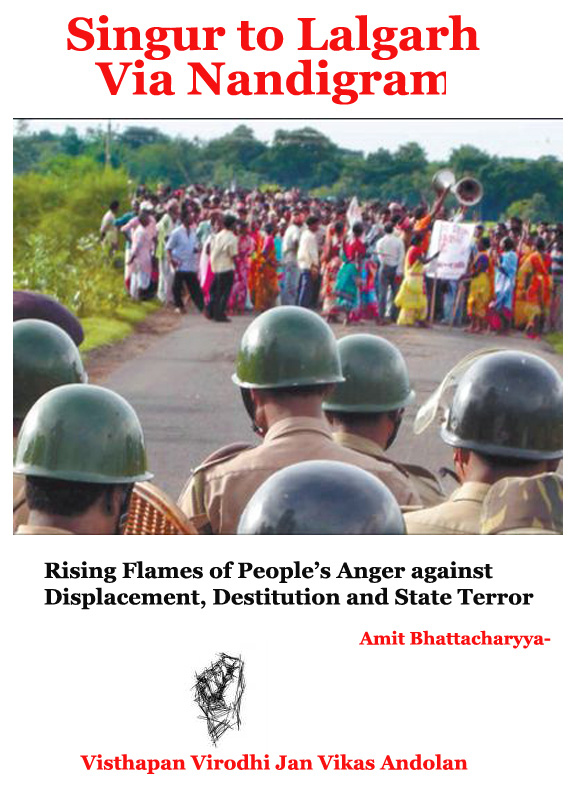Security success: 15km trek to cover 2.5km Hot pursuit but Bikash escapes
Posted by Admin on September 1, 2009

Security forces in Lalgarh during the anti-Maoist operation. File picture
Sujan Dutta, who covered the Lalgarh operation for The Telegraph, returns to the zone after two months
Lalgarh, Aug. 31: A central police officer here says the most successful offensive against the Maoists in the two months since the “combined forces” entered Lalgarh took place on July 20 at a village named Tetultala.
It is a success story in the lab called Lalgarh — as the Centre describes the zone. This is how the police define success:
A contingent of the police, acting on intelligence from mobile phone intercepts, began advancing off-the-road towards Tetultala, a hamlet near Kadashole, north from the Lalgarh police station. The distance from the starting point to the target area was 2.5km.
“But we covered more than 15km in the night to reach it, encircle it and conduct searches,” said the officer. “It was our biggest success.”
The reason: the forces engaged the Maoists in battle in the forests on the outskirts of the hamlet. They opened fire with medium machine guns. The Maoists, he said, used automatic firearms, probably a light machine gun, and set off explosives planted in the road and in the fields to deter the police.
The officer believes — again, on the basis of mobile phone intercepts — that at least three members of the Maoist armed squad were killed and six injured.
The police also believe that in another hot pursuit, Bikash, the Maoist commander suspected to be in charge of his party’s squads all over Lalgarh, was chased for 18km.
Despite his knowledge of the terrain — Bikash is from the area and the police suspect the name is an alias for Sasadhar Mahato, People’s Committee Against Police Atrocities chief Chhatradhar Mahato’s brother — he is understood to have lost his way in a forest till he was guided by his comrades.
Military operations against the Maoists have strange yardsticks for success: such as, 15km to reach a target merely 2.5km away and 18km of hot pursuit to nab a quarry who still manages to flee.
The central forces are armed with night-vision devices to spot figures in the dark more than a kilometre away, two-inch and 84mm mortars, and the standard-issue AK-47 and Insas rifles.
Between June 29, when the police linked up in Kantapahari to ring a “circle of domination”, and now, there have been more than 25 “engagements” between the Maoists and the security forces — at the rate of one every two days. These have been mostly in the forests.
A two-inch map of the zone that the security forces now use — obviously gathered from a remote-sensing agency — shows that nearly 60 per cent of the area is forested.
But it is not hilly. Indeed, for the CRPF companies that are battle-hardened, this terrain is “friendly”, unlike Kashmir and the Northeast. The Bengal police, of course, say the topography is hostile.
“There has to be a period of familiarisation,” said district magistrate Narayan Sarup Nigam. “But now the police are going after them (the Maoists) in the forests.”
He said the police were in the middle of the toughest part of Operation Lalgarh. “Phase I — the road-opening bit — was easy but now there has to be a stop to general crime.”
The claim of 25 “engagements” between the Maoists and police pales in comparison with the statistic on “general crime”. There have been at least 26 killings, mostly of tribals suspected by the rebels to be police informers.
The rebels have shown they are as intolerant of dissent as the CPM has been. TT

























Leave a comment